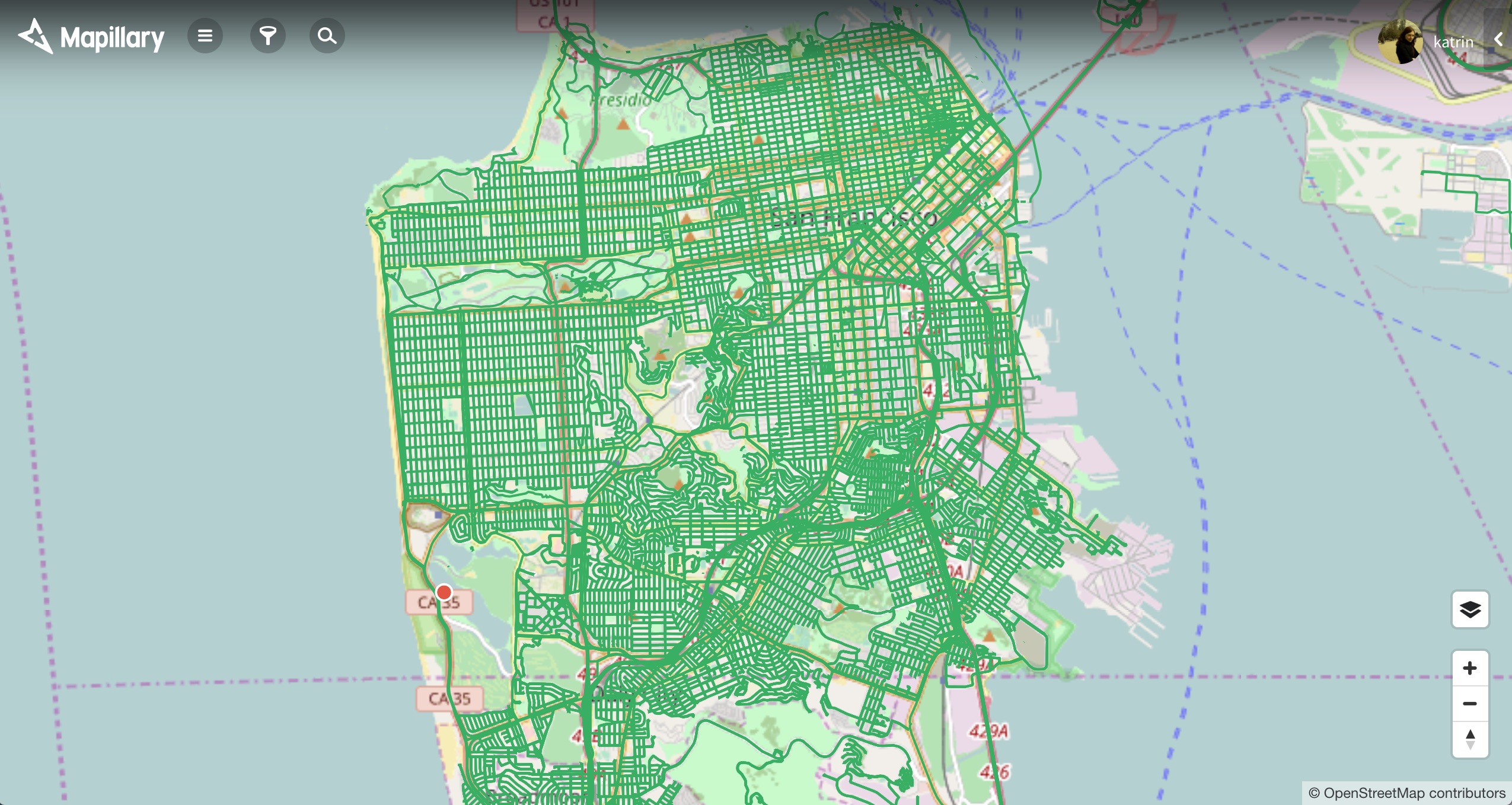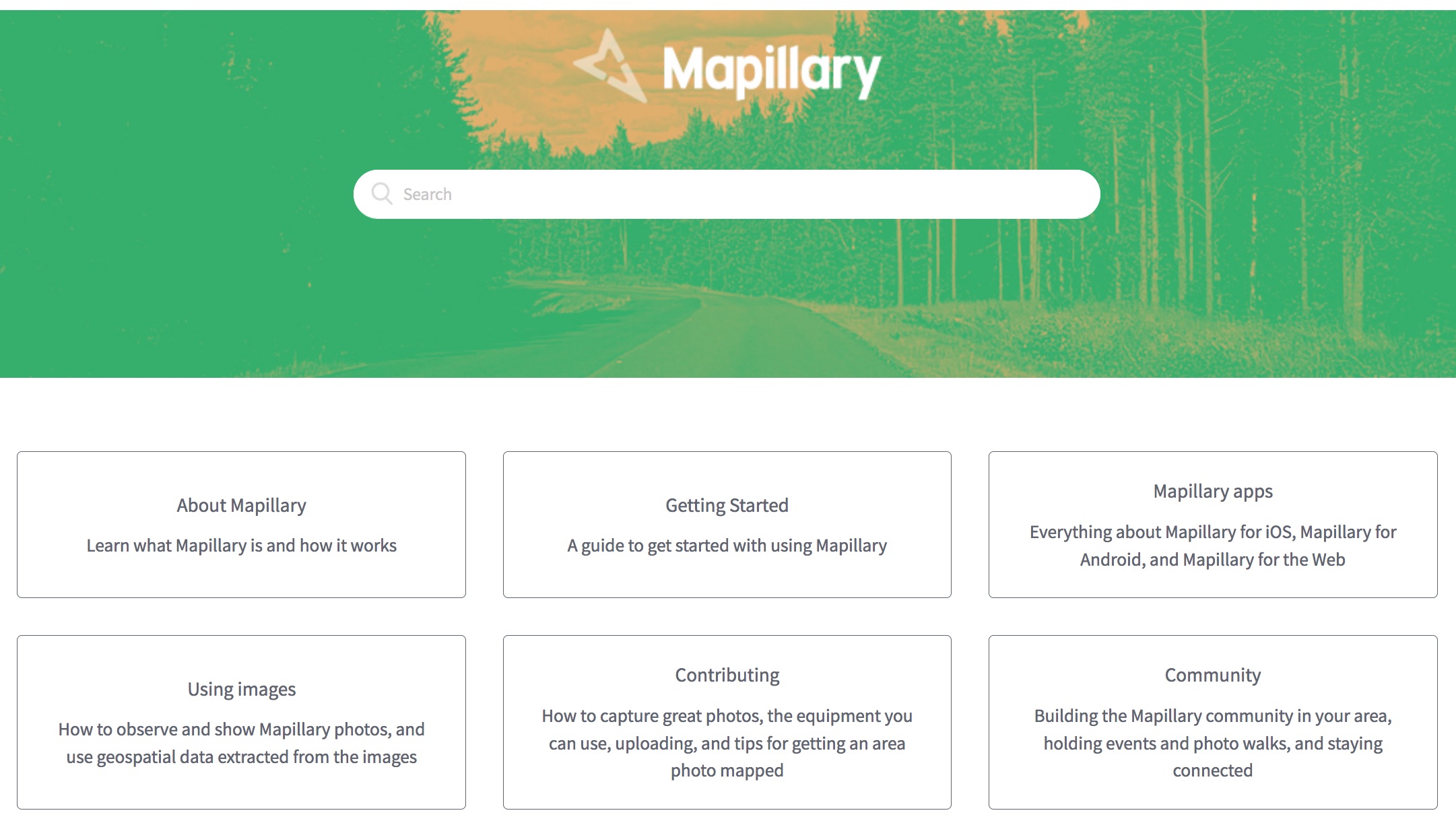11 Frequently Asked Questions About Mapillary
There is a lot to explore on Mapillary, but also so much to explore about Mapillary. Here are answers to 11 of the most common things people want to know.
Mapillary is at the same time simple and comprehensive. The idea is clear—we all want to use street-level images to understand the world's places better. But since the whole platform consists of so many different parts, there is of course a lot of room for questions.
We are always super happy when people ask us questions, because it means they're interested! It also helps us improve things. To encourage everyone to find out more about Mapillary, we want to share 11 questions we frequently get, along with the answers. We're going to keep it brief here—for more details, please take a look around our Help Center.
1. Can I upload single photos?
Technically you can, but we recommend that you don't. Mapillary is about capturing sequences of photos, because having photos taken close to each other is crucial for us to create 3D reconstructions of places. That in turn provides really great visual experiences when exploring the photos as well as aids in extracting useful information from the images. Find out more about our computer vision technology.
2. Can I take photos in portrait orientation?
No. Mapillary supports landscape orientation. Keep your camera/phone horizontally when you capture. Find out more about how to capture really great sequences.
3. How long until my photos are on the map?
When you upload photos, they will be processed by our computer vision technology to blur faces and licence plates and get connected with other photos in the same area. This will normally take a few hours but in general you should see your uploads within a day. If you upload videos, the processing time gets longer. Find out more about uploading.
4. Why are my tracks on the map zig-zagging so much?
Normally, you create the track by recording location information alongside your photos, using a device with GPS. In a lot of cases this will be a phone. GPS works by your device having an unobstructed line of sight to GPS satellites orbiting the earth. Depending on how good those lines are, you will get a better or worse GPS fix. Especially with everyday devices, precision will not be super high and you will see your tracks on the map wobble around the path that you know you took in reality. The good news is that you can correct your tracks post-upload. Find out more about GPS and what you can do to improve the fix, as well as editing the location of images on the map.
5. How does Mapillary take care of privacy? For example, the people that happen to be captured on the photos.
Our computer vision technology detects faces and licence plates on the photos and applies blurs to them before they are visible on Mapillary. The detection algorithms are in constant improvement and as a backup, we have a system for anyone to manually correct blurs on photos. Read more about privacy.
 Example of face and licence plate blurring
Example of face and licence plate blurring
6. Does Mapillary own the photos I contribute?
No. You give Mapillary the rights to use the photos, but you will always own the full rights to the photos you contributed. Find out more about licenses and attribution.
7. I’m interested in 360° capturing, which camera should I get?
There are a lot of consumer-grade 360° cameras on the market by now, but for Mapillary purposes you should choose something that captures decent-quality images with high enough frequency and doesn't require a lot of work between the capturing and uploading. For example, we like the LG 360, Ricoh Theta S, and Giroptic 360—we even have Mapillary app integrations with these to make capturing really easy. Find out more about different 360° cameras.
8. I have Camera X, can I contribute with that?
In principle, you can contribute with any camera, as long as you find a way to simultaneously record the location information that needs to go with the images when you upload them to Mapillary. True, some options mean considerably less work, such as capturing with your smartphone using the Mapillary app. In a more labour-intensive case, you will capture photos with a camera and GPS tracks with another device (like your phone) and combine them later. Between those two are also options like using an external camera via the Mapillary app integration, or using a camera that has built-in GPS. Find out more about capture equipment.
9. Why isn’t Time Travel working? I know I was in the exact same place.
The Time Travel function works based on the information about the location and direction of the photo, as captured by your device's GPS and compass. Therefore, it is subject to how precisely your device captured this information at the particular point (as explained above for GPS, for example). So it might be obvious to you that it's the same spot, but if the data doesn't match precisely enough, you won't see the little clock icon become active. Find out more about Time Travel.
10. What’s the use of Mapillary images besides just seeing places?
One of the main uses of Mapillary imagery is to edit geospatial data. You can get so much information from a ground-level view, no matter whether you observe it visually yourself or extract it automatically with help of computer vision. A picture is worth a thousand data points, as the popular saying goes. Find out more about editing GIS data with Mapillary.
11. How do I get data about a place when there are no images?
Glad to get to this one! One of the main strengths of Mapillary is that anyone, anywhere can capture street-level images. You don't need to wait for anyone else to do it for you and you don't need any fancy equipment. All you need is a few good people equipped with simple devices and to follow the tips that the Mapillary community has figured out via extensive fieldwork. Find out more about getting an area photo mapped.
 San Francisco, one of the flagships of Mapillary coverage as a result of systematic efforts
San Francisco, one of the flagships of Mapillary coverage as a result of systematic efforts
What are your top 3 questions you'd like to ask about Mapillary? Let us know here in comments or via email and we'll check that we'd have that information available.
/Katrin and the Mapillary team

